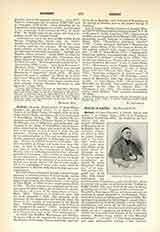

Gerbillon, JEAN-FRANCOIS, French missionary; b. at Verdun, June 4, 1654; d. at Peking, China, March 27, 1707. He entered the Society of Jesus October 5, 1670, and after completing the usual course of study taught grammar and the humanities for seven years. His long-cherished desire to labor in the missions of the East was gratified in 1685, when he joined the band of Jesuits who had been chosen to found the French mission in China. Upon their arrival in Peking they were received by the Emperor Kang-Hi, who was favorably impressed by them and retained Gerbillon and Bouvet at the Court. This famous monarch realized the value of the services which the fathers could render to him owing to their scientific attainments, and they on their part were glad in this way to win his favor and gain prestige in order to further the interests of the infant mission. As soon as they had learned the language of the country, Gerbillon with Pereyra, one of his companions, was sent as interpreter to Niptchou with the ambassadors commissioned to treat with the Russians regarding the boundaries of the two empires. This was but the beginning of his travels, during which he was often attached to the suite of the emperor. He made eight different journeys into Tatary. On one of these he was an eyewitness of the campaign in which Kang-Hi defeated the Eleuths. On his last journey he accompanied the three commissioners who regulated public affairs and established new laws among the Tatar-Kalkas, who had yielded allegiance to the emperor. He availed himself of this opportunity to determine the latitude and longitude of a number of places in Tatary. Gerbillon was for a time in charge of the French college in Peking, and afterwards became superior-general of the mission. He enjoyed the special friendship and esteem of the emperor, who had a high opinion of his ability and frequently availed himself of his scientific and diplomatic services. He was withal a zealous missionary, and in 1692 obtained an edict granting the free exercise of the Christian religion. After the emperor’s recovery from a fever, during which he was attended by Gerbillon and Bouvet, he showed his gratitude by bestowing on them a site for a chapel and residence.
Gerbillon was a skilled linguist. He was the author of several works on mathematics, and wrote an account of his travels in Tatary. These relations are valuable for their accurate account of the topography of the country, the customs of the people, and also for the details of the life of the missionaries at the Court. Among his works are “Elements de Geometrie” (1689), “Geometrie pratique et theorique” (1690), “Elements de philosophie”, “Relations de huit Voyages dans la Grande Tartarie”. A work entitled “Elementa Linguae Tartaricae” is also attributed to him.
HENRY M. BROCK.

